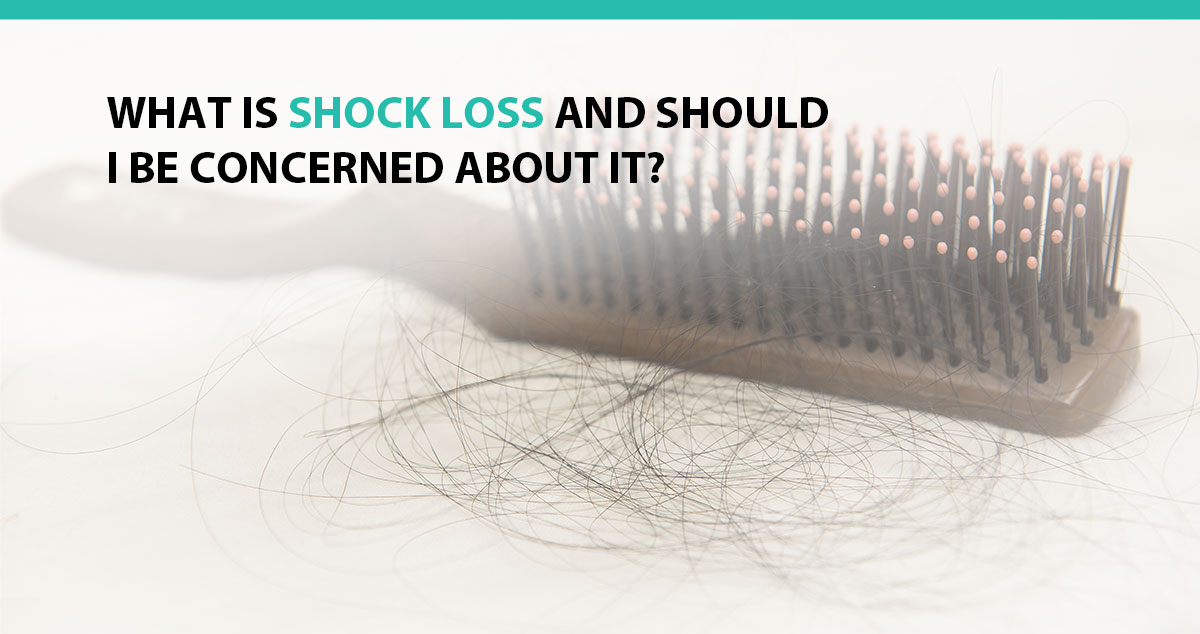
Surgeons and doctors do amazing work every day, and it’s easy to look at the results and think, “Wow, that turned out great!”
The truth is that those results come from not only having doctors who are good with their hands; the best doctors understand the whole process of a procedure, including prepping, planning, potential hazards, and solutions to a large amount of potential complications.
So What Is Shock Loss?
Shock Loss, also called “shedding,” is a normal result of Hair Transplant procedures, whether Follicular Unit Extraction (FUE) or Follicular Unit Transplantation (FUT).
When you remove the hair follicle from the body, it responds with shock, and even though you are transplanting it into the same body, it is not where it was before and needs to adapt to the new location.
If there are a larger number of thin or miniaturized hair follicles near to the recipient location of the Hair Transplant, this can appear more pronounced because of the lack of strong surrounding hair follicles.
This is one of the most important reasons you need to listen to your doctor’s after-care instructions for your Hair Restoration procedure. Within one to two weeks (7-14 days), the transplanted hair might start to shed as the hair follicles begin to heal and readjust for their new homes.
This usually lasts up to about twelve weeks (3 months), then the hair starts to grow back and recover over the next eight to nine months.
If you follow all of your doctor’s instructions, and your donor hair is healthy, you should notice this recovery occurring naturally over time.
What About Donor Areas? Can They Suffer Shock Loss Too?
Experienced surgeons should be able to perform the procedures of your FUT or FUE in such a way that hair shedding from the donor areas should be minimal or nonexistent in most cases. But there is always the possibility of other contributing factors that might cause some shedding in those areas.
As with the recipient area, if shedding does occur, the follicles usually recover swiftly and with no lasting effect. If you find that you are concerned about the level or type of shedding, feel free to contact your Hair Restoration Specialist to find out if you should take extra precautions.
What If I Have Shedding And Haven’t Had Hair Restoration?
Hair shedding is a natural phenomenon, so it is usually not something to be concerned about. Most people lose between 50 and 100 hairs per day as part of the natural growth cycle of the human body.
However, those should be isolated hairs and should occur throughout the entirety of the day. If you find your hair coming out in clumps, or if you start to see easily noticeable bald spots, you should consider seeking the help of a Hair Restoration Specialist like Dr. Williams of Advanced Medical Hair Institute.
With the prominence of cell-phones and other digital devices these days, it can be helpful to photograph the areas where you see the loss occurring, as well as any particular clumps of hair that you happen to notice falling out in order to assist with determining treatment.
How Can I Find Out More About Hair Restoration And Treatment?
If you’re in or near Las Vegas, Nevada, one of the world’s most respected Hair Restoration surgeons is a phone call away.
Even though Shock Loss is a natural occurrence in the process of hair transplantation, you want a doctor who knows the ins and outs of every hair restoration treatment – and for southern Nevada, that is Dr. Williams.
Dr. Williams treats every patient as a unique treatment because each of us is unique! From the first consultation to the final treatment, you can count on the best care and the best results at Advanced Medical Hair Institute.
Contact us today at 1-888-357-0888, or Request A Consultation.










